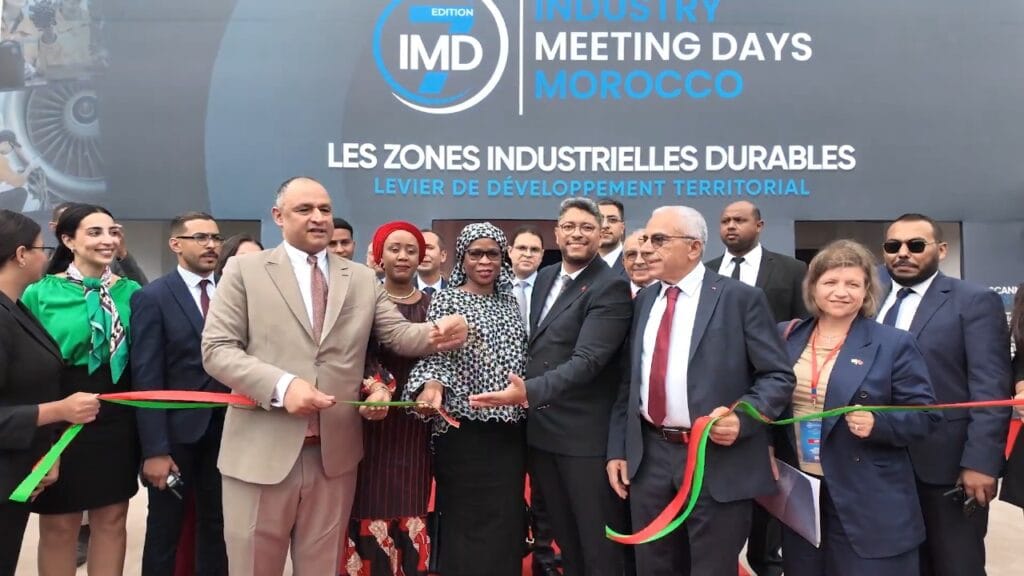Morocco is accelerating its industrial transition by leveraging a strategic advantage: making industrial zones not only economic engines but also models of sustainability. During the first panel of the Industry Meeting Days 2025, planners, industrialists, investors, and public representatives discussed a shared ambition: transforming activity zones into responsible and competitive ecosystems.
From Awareness to Collective Structuring
In his opening remarks, Mounir Benyahya, president of the Collective of Industrial Zones for the Environment (COZINE), emphasized that this initiative stems from a clear observation: the proliferation of industrial zones in Morocco has not always been accompanied by effective governance or an ecological vision. With the support of partners such as the German GIZ, the American MCC, and the Ministry of Industry, COZINE has developed a guide for transitioning to sustainable zones, available for download online, which is now a reference in the field.
This Moroccan framework, inspired by international standards, lays the groundwork for an integrated approach that links economic performance, environmental preservation, and social well-being.
Pilot Projects Rooted in Innovation
Among the concrete experiences, the ParcX project, led by INNOVX and Mohammed VI Polytechnic University, illustrates this new generation of high-value-added industrial zones. Deployed across several sites (Jorf Lasfar, Benguerir, Khouribga, Mzinda), ParcX aims to create integrated ecosystems around green energy, smart water management, and shared infrastructure. “Our ambition is to catalyze industrial synergies around recycling, waste recovery, and effluent treatment,” asserts Othmane el Yaalaoui, vice president of INNOVX.
For Industrialists, Sustainability Equals Competitiveness
From the companies’ perspective, the green transition is seen not as a constraint but as a performance lever. Selma Alami, CEO of Nexans Morocco, emphasizes that competitiveness now involves reducing carbon footprints, proximity logistics, and increased energy efficiency. She also advocates for a strategic distribution of port infrastructure along the coastline, allowing each region to specialize and better support its industrial fabric.
A Regionally Adapted Mobilization
The Regional Investment Centers (CRI) share this dynamic, each with its specificities. In the Oriental region, the development of zones like the Oujda technopolis or the Berkane agropolis is part of a long-term vision integrating renewable energies, optimized water management, and recycling. In the Tanger-Tétouan-Al Hoceima region, the Kingdom’s second industrial hub, the ambition is clear: every new zone must meet ecological standards. The green certification of Tanger Med Zones, powered 100% by renewable energies since January 2025, now serves as a model.
Rehabilitating the Existing: An Overlooked Imperative
While the future lies in eco-designed zones, the existing ones must not be neglected. “We have a significant upgrading challenge,” reminds Mounir Benyahya. This involves not only environmental certifications like ISO 14001 but also concrete social amenities: relaxation areas, childcare, dining, and occupational health services. “An industrial zone should no longer be just a production space but a true living environment.”
Towards an Incentive Moroccan Labeling
To stimulate this dynamic, participants proposed creating a national sustainability label with several levels—bronze, silver, gold—based on the efforts made. This idea is widely supported, particularly by ParcX, which aims for HQE and BRIM certifications from the design phase and is already working with UNIDO and IFC to integrate the Eco-Industrial Parks (EIP) standard.
Attractiveness in Focus
Beyond the environmental dimension, these sustainable zones enhance the attractiveness of the territory. The example of the Chinese gigafactory for wind turbine blade manufacturing in Nador illustrates how proactive land offerings and efficient logistics can make a difference. In the North, the NordDev fund also subsidizes projects that incorporate a social or ecological dimension, in addition to the support provided by the National Investment Charter.
A Strong Ambition, Challenges to Overcome
While progress is real, participants did not shy away from the obstacles: limited land availability, difficult access to water and competitive renewable energies, and long payment delays. These are all barriers that must be addressed to turn this green ambition into a large-scale reality.
But one thing is certain: Morocco has charted its course. It is no longer just about building industrial zones but about creating sustainable, resilient, and inclusive territories. A transformation that public and private actors seem ready to embrace today, focusing on innovation, consultation, and collective intelligence.


